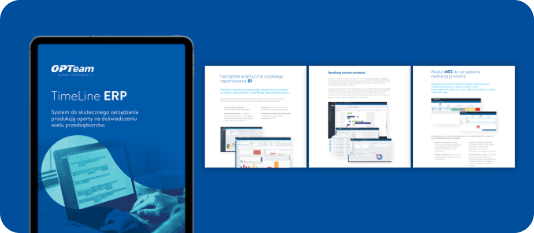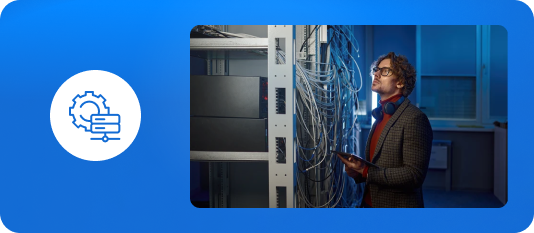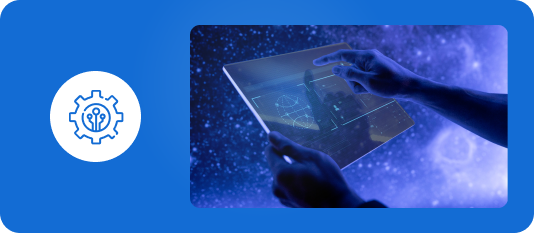Chatbots - what are they and how are they used?
With increasing digitalization, more and more areas of business and institutional operations are being automated. One such area is communication, where chatbots are gaining popularity. Conversational bots are being used to both reduce the workload of customer service employees and efficiently serve customers and stakeholders.
Society, which uses internet and mobile technologies daily, expects new, more effective forms of communication, providing faster and easier access to information and services provided electronically. Chatbots are a response to these expectations, streamlining online communication processes, thus increasing the operational efficiency of companies and institutions.
What is a chatbot?
A chatbot is a type of software that simulates a conversation, thus enabling interaction between a person and a company or institution. Also known as a conversational bot, virtual assistant, or virtual advisor, it is used to improve the quality of service and increase the number of completed transactions or reported issues.
The first chatbots were simple, rule-based communicators. They provided concise, short answers to relatively simple questions. Users felt the experience was mechanical, so they easily guessed that a robot, not a human—a customer service representative or stakeholder—was responsible for the communication. The conversation was artificial, and what's more, not every question generated the correct answer. It's no wonder, then, that the first chatbots didn't gain traction with users, who still opted for phone contact for some time.
Over time, everything changed. Today, chatbots are advanced solutions that continuously learn how to conduct conversations based on acquired or provided information, processing it to better handle the growing number of submitted questions. This is also how conversational bots created on the OPTiBOT platform operate. As they acquire knowledge provided by the administrator or based on ongoing interactions, they continually develop their communication skills. Users are more likely to choose their assistance than to contact a company or institution by phone or in person. Communication is fluid, coherent, and logical, the language is casual and natural, and the style is tailored to potential interlocutors, but also appropriate for the company or institution. If it weren't for users' full awareness of the widespread use of chatbots today, no one would likely even suspect that the conversation is being driven not by a human but by an intelligent machine.
What types of chatbots are there?
The development of chatbots has led to a more or less advanced technology used to automate text-based communication. The mechanisms used determine the division of chatbots into task-based and conversational ones.
- Task-based bots operate based on established rules and are often block-based. They support a typical pattern of short questions and precisely defined answers. Therefore, they are well-suited for simple and common requests related to routine customer service issues.
- Conversational bots no longer operate solely based on rules but also utilize natural language processing, machine learning, and even artificial intelligence. This allows them to conduct more complex conversations – understanding the context of the conversation, interpreting questions, and personalizing responses. They are focused on continuous learning to improve the communication process. They expand their service capabilities as the number of interactions increases. Therefore, they are used in applications requiring full support of the customer service process.
New-generation chatbots combine simple, block-based solutions used in task-based bots with advanced conversational bot technology. They utilize a set of predefined responses available to users as clickable options, but can also independently select responses based on databases, generating precise natural language responses. These solutions are used in virtual assistants and advisors created on the OPTiBOT platform, helping to build a positive experience for the stakeholders they serve. Chatbots built on the OPTiBOT platform maintain a logical flow of the conversation. When the need arises to connect the user with a consultant, they make this decision autonomously.
However, the potential of a chatbot lies not only in the technology used. The effectiveness of its conversations is influenced by many additional factors, such as the quality of the prepared databases, interface design, interaction options, and user experience elements.
How to implement a conversational bot?
When deciding to implement a chatbot, you must first answer the question of what customer needs it should address, and therefore what business or institutional goals it will fulfill. Determining the role of the conversational bot should be the starting point for work related to automating communication with the environment.
Designing and implementing a conversational bot consists of several stages.
1. Communication area.
The first step in designing a conversational bot is to determine the area of communication to be automated. This will allow you to more precisely define the target audience, thus characterizing all potential interlocutors of the future chatbot. Identify their problems and identify their most frequently asked questions. It's worth consulting frequently reported problems, conversation scripts, and responses.
2. Knowledge base
The next step is building a knowledge base for the designed chatbot, from which it can draw the information needed to conduct conversations. This knowledge base is based on data obtained through target group analysis, but also through integrating the conversational bot with the organization's internal resources. The more information included in the knowledge base, the more communication topics can be effectively automated.
3. Conversation paths
Once you know your target audience and have a knowledge base, you can begin building conversation paths. It's worth preparing several templates for each path, taking into account synonyms, word inflections, sentence structure, and even possible spelling errors. This will determine the degree to which intentions are understood and requests interpreted, and therefore the chatbot's effectiveness. When designing conversation paths, it's also important to maintain natural language so that the user feels a sense of a normal conversation. Therefore, it's worth focusing on simple and concise sentences, which are more common in everyday conversations than complex ones. These will facilitate the fluidity and clarity of the automated communication process.
4. Interface Design
Building a chatbot isn't just about defining the components of a conversation; it also encompasses the interface, its structure, and functionality. As a text-based communicator, a chatbot should be equipped with elements that allow users to enter questions and display responses. To enhance user experience, consider using automatic prompts, which appear in the form of block buttons with options. A key element of the interface is the welcome screen, with additional interactive elements such as referral links, images, animations, and videos. All of this contributes to a positive user experience (UX), and ultimately, the chatbot's effectiveness.
5. Visual Identity
A chatbot should be consistent with the organization's visual identity. The logo, colors, and graphical schemes used in the organization's online channels and promotional materials should be reflected in the conversational bot's design. While virtual assistants serve to streamline the communication process, it's important to remember that they also play a crucial role in building brand identity and shaping brand awareness among its audience.
The work of creating a chatbot doesn't end with its launch. To effectively serve as a virtual advisor, it must continually develop its communication skills. Therefore, it must constantly acquire new information and expand its knowledge to enhance its ability to interpret requests and, ultimately, serve as many interlocutors as possible.
Where to use a conversational bot?
There are essentially no limits to the use of chatbots. Conversational bots are used in both external and internal communications within a company or institution. They prove useful in virtually every area, both as a tool for HR departments and in customer service.
In business, chatbots are a common addition to online store functionality. As virtual advisors, they help consumers find or select products, as well as complete purchase transactions. Outside of e-commerce, virtual advisors support customer service employees, including explaining complaint procedures, placing orders, booking appointments, selecting financial investments, tracking shipments, providing information on service availability, handling fault reports, and resolving routine issues. Although conversational bots are most widely used in customer communication, they can also be used to establish and maintain relationships with business partners. As an HR tool, they are useful for onboarding new employees.
Universities are increasingly using conversational bots, primarily to relieve staff in dean's offices and admissions offices of providing information to students and applicants. Virtual Assistants created on the OPTiBOT platform help students, including international students, adapt to university life and complete formalities electronically. They relieve administrative staff in processes related to the course of study, and academic career offices in communication related to career counseling. They are also ideal for help desks, where a quick response to simple issues is crucial.
Chatbots are also used in public administration units. Because institutions in this sector typically have several relatively complex services, the role of virtual assistants is most often limited to helping users find information and documents available on websites, providing information about regulations and procedures, and the scope of activities of the institution and individual departments. However, support from a conversational bot can also include assistance in using e-services or completing formalities electronically. Virtual assistants are designed for such tasks on the OPTiBOT platform, which can be implemented in many departments, such as the Department of Citizens' Affairs (registration - deregistration, ID cards), the Civil Registry Office (civil status certificates), the Communication Department (communication, transport, registration certificates) or in Resident Service Centers.
What benefits does a chatbot provide?
A conversational bot is always implemented with a specific goal in mind. Typically, the goal is to improve communication efficiency – higher-quality service and increased ticket acceptance. To truly assess a chatbot's effectiveness, it's necessary to define KPIs, or metrics for evaluating its performance. The OPTiBOT platform allows you to monitor the effectiveness of virtual assistants and advisors built on it, providing detailed data on interactions. To assess a chatbot's effectiveness, consider factors such as:
- response time to requests,
- number of requests received,
- number of requests handled,
- number of requests not handled,
- number of requests forwarded to a consultant,
- average request handling time,
- level of customer satisfaction.
Based on the results of an analysis conducted based on the adopted KPIs, it will be possible to determine whether a conversational bot is actually fulfilling its role. However, ongoing research aimed at assessing the effectiveness of chatbots clearly shows that text messaging tools lead to improved communication processes. Because they can operate 24/7, they offer companies and institutions a number of benefits, including:
- time savings,
- cost savings,
- better work and task organization,
- increased conversion rates.
The use of conversational bots to automate communication is therefore justified. It's no surprise that a growing number of companies and institutions are using virtual assistants and advisors to support employees in customer service and provide customers with the fastest and highest-quality assistance possible. Furthermore, a well-designed chatbot can be a starting point for automating voice communication using so-called voice bots, which can be operated on the OPTiBOT platform.
Summary
A conversational bot is undoubtedly an important element of communication automation. Its effectiveness is confirmed by statistics, as is the growing interest in implementing virtual assistants and virtual advisors on websites, online stores, mobile apps, and social media messaging. However, it's important to remember that the effectiveness of a conversational bot depends on many factors, such as the knowledge base, conversation paths, design, and, above all, the natural language processing and machine learning mechanisms used. Therefore, to have a chatbot capable of continuous learning and improving its conversational capabilities, choosing the right platform for building advanced virtual assistants and virtual advisors is crucial.














